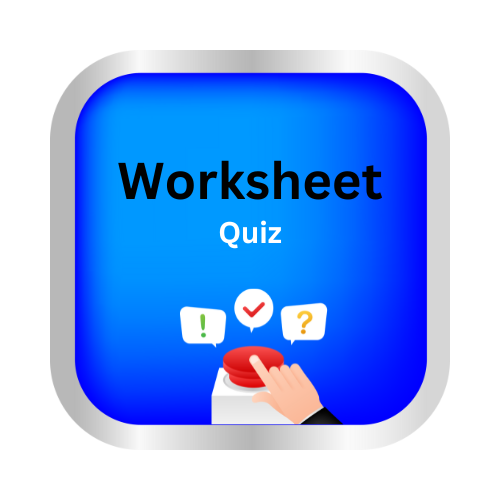Analogies
Key Notes:
| What are Analogies? |
Analogies are comparisons between two things that share a similar relationship. In simpler terms, an analogy shows how two pairs of words are related to each other in the same way.
Analogies are written as: A : B :: C : D
This is read as ‘A is to B as C is to D’.
The goal is to figure out the relationship between A and B, and then find a word D that has the same relationship to C.
| Understanding Relationships |
To solve analogies, you must first identify the relationship between the first pair of words (A and B). Here are some common types of relationships:
- Synonyms: Words that have similar meanings (e.g., happy : joyful)
- Antonyms: Words that have opposite meanings (e.g., hot : cold)
- Part to Whole: One word is a part of the other (e.g., finger : hand)
- Cause and Effect: One word causes the other (e.g., fire : smoke)
- Function: One word describes the function of the other (e.g., knife : cut)
- Characteristic: One word describes a characteristic of the other (e.g., lemon : sour)
- Degree: Words represent different intensities (e.g., warm : hot)
- Location: One word represents a location of the other (e.g., fish : ocean)
| Examples |
Let’s look at some examples:
happy : sad :: excited : ?
- Relationship: Antonyms (happy is the opposite of sad).
- Answer: depressed (excited is the opposite of depressed).
bird : wings :: fish : ?
- Relationship: Part to Whole (wings are part of a bird).
- Answer: fins (fins are part of a fish).
teacher : education :: doctor : ?
- Relationship: Provides (a teacher provides education).
- Answer: healthcare (a doctor provides healthcare).
hot : scorching :: cold : ?
- Relationship: Degree (scorching is a greater degree of hot).
- Answer: freezing (freezing is a greater degree of cold).
| Practice Exercises |
Complete the following analogies. Identify the relationship between the first pair of words and choose the word that best completes the second pair.
- day : night :: up : ?
- shoe : foot :: glove : ?
- artist : paint :: writer : ?
- car : road :: boat : ?
- tree : forest :: soldier : ?
- smile : happy :: frown : ?
- pen : write :: fork : ?
- giant : tiny :: huge : ?
- fire : hot :: ice : ?
- cat : meow :: dog : ?
| Answers |
Here are the answers to the practice exercises:
- day : night :: up : down (Antonyms)
- shoe : foot :: glove : hand (Part to Whole)
- artist : paint :: writer : word (Tool and Use)
- car : road :: boat : water (Location)
- tree : forest :: soldier : army (Part to Whole)
- smile : happy :: frown : sad (Cause and Effect)
- pen : write :: fork : eat (Function)
- giant : tiny :: huge : small (Synonym to Synonym – Antonym to Antonym)
- fire : hot :: ice : cold (Characteristic)
- cat : meow :: dog : bark (Sound)
| Next Steps |
Now that you understand the basic concepts of analogies, continue practicing to improve your skills. Try to identify different types of relationships between words and create your own analogies. This will help you expand your vocabulary and improve your reasoning abilities.
Let’s practice!

